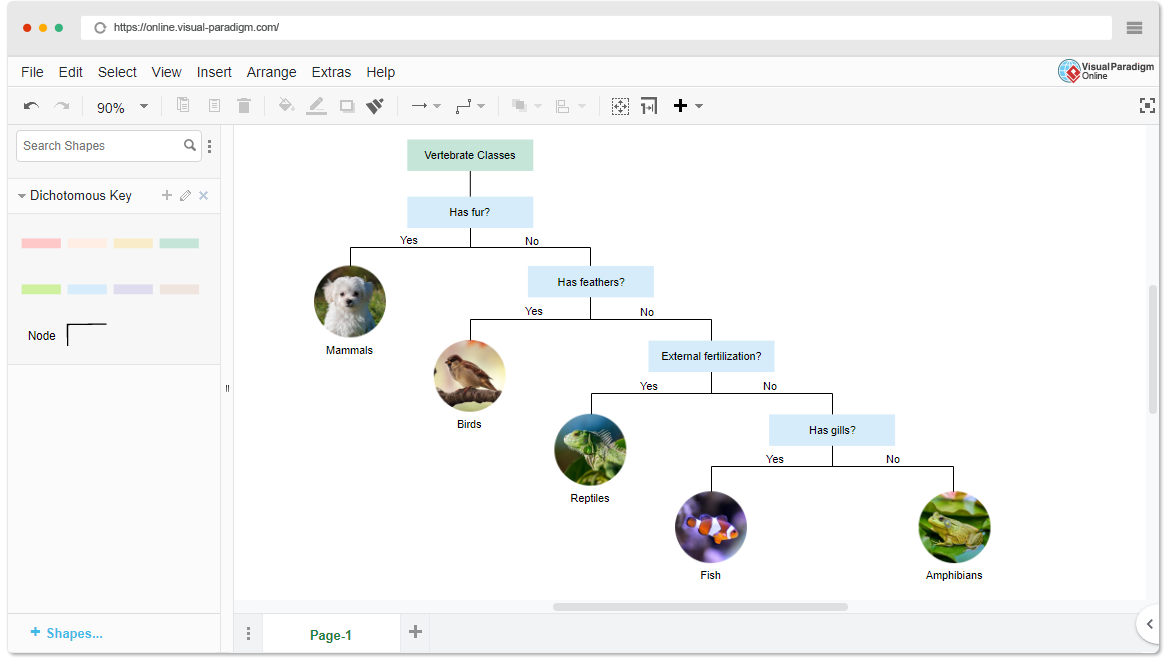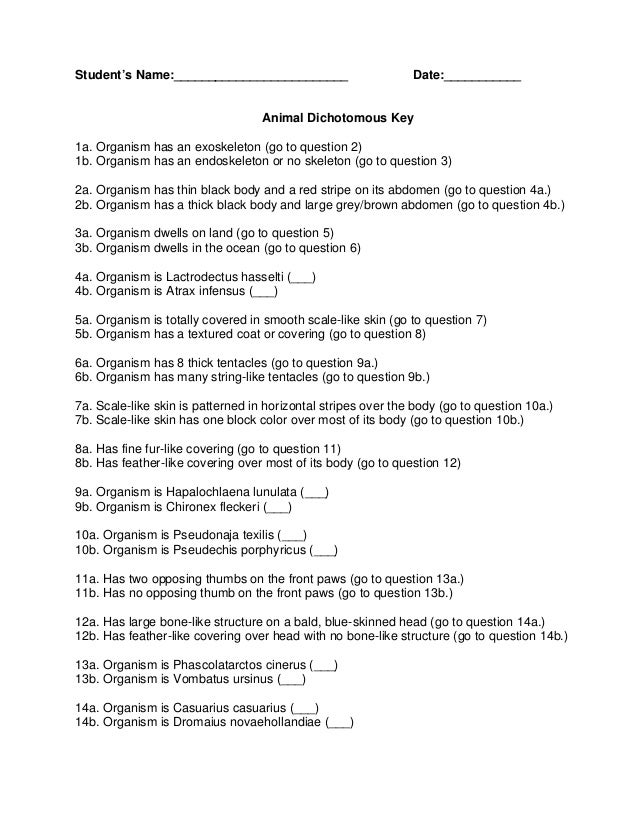Dichotomous keys is a diagram used in classification of organism. Dichotomous keys are often used in field guides to help users accurately identify a plant or animal. VP Online Diagrams comes with a rich set of diagram templates. You may start with a blank diagram or a pre-made Dichotomous keys template. Unlike a traditional plant identification key that provides you with only two choices at each step (a dichotomous key), these keys let you select multiple characters simultaneously (polyclave key). This makes more character data available in the key and minimizes the number of steps it takes to identify a plant. Dichotomous keys are often used in field guides to help users accurately identify a plant or animal. VP Online Diagrams comes with a rich set of diagram templates. You may start with a blank diagram or a pre-made Dichotomous keys template. Followings are few of the Dichotomous keys templates. Click the Edit button to start editing straight away. It's free and no registration needed.
- Key or a dichotomous key by consulting different sources and finding the characteristics of the above species. The best source that we have is the Bergey's Manual. Thus, we go to the index or table of contents of this manual, and finding the genera names, determine if they are cocci, rods or spirilla and also find their reaction to the Gram stain.
- List the characteristics of your specimens. Start by considering the specimens you are trying to identify and insert into a dichotomous key. Note characteristics that define the things.
Dichotomous key
Make A Dichotomous Key Generator Using
A dichotomous key is guide, sort of like a map of characteristics, to lead the user to the correct identification of the plant. The word dichotomous comes from two Greek words that mean divide in two parts. To make a dichotomous key you will choose physical characteristics that can be used to divide a collection into two parts. Possible physical characteristics to use include plant size, plant shape, leaf shape, stem type, color, and presence of seeds, fruits or flowers. You will continue to divide each group in two until all of the groups have only one member.

How to do it
Step 1: Begin by gathering your plants (or pictures of plants) to be identified. For example: a corn plant, hosta, oak tree and dandelion.
Step 2: Decide how to split your group in two parts. Carefully observe your specimens to pick a characteristic which can be used to decide which plant goes into which group. Record the chosen characteristic and the groups formed. For example, this group of corn, hosta, oak tree and dandelion could be divided by leaf color:
A. The leaves are solid green. See #2.
B. The leaves have a white margin. Your plant is a hosta.
Step 3: After the collection has been divided into two groups, divide the first group (group A) into two more groups based on one characteristic. Record your characteristic and groups. When you form a group with only one plant, name it. The next division in this example is leaf edge:
A. The leaves have a straight edge. Your plant is corn.
B. The leaves have a curvy edge. See #3.
Step 4: Continue to identify characteristics and divide groups until all of the plants are named. Be sure to record each division made. When the first group is complete, repeat the steps until all of the plants in the second group (group B) have been named. Your completed key should look something like this:
1)
A. The leaves are solid green. See #2.
B. The leaves have a white margin. Your plant is a hosta.
2)
A. The leaves have a straight edge. Your plant is corn.


B. The leaves have a curvy edge. See #3.
3)
A. The plant has a woody stem. Your plant is an oak tree.
B. The plant has soft stems. Your plant is a dandelion.
The sample key is fairly short and simple. The more items your beginning collection has, the longer your key will be. Have a friend try out your completed key to see that it leads users to the correct choices and identification.
A dichotomous key is a useful classification tool that notes the similarities and differences between different plant species. By observing similarities and differences in plants, scientists can classify plants into families and gain further understanding of their characteristics. Scientists use dichotomous keys to organize and classify large amounts of information so it can be easily shared with other scientists and studied.Dichotomous keys can be developed to identify anything.
Source: www.brighthubeducation.com

GoBotany.NewEnglandWild.org. Plant Dichotomous Key
Dichotomous Key Template Pdf
Photo: commons.wikimedia.org by CNX OpenStax